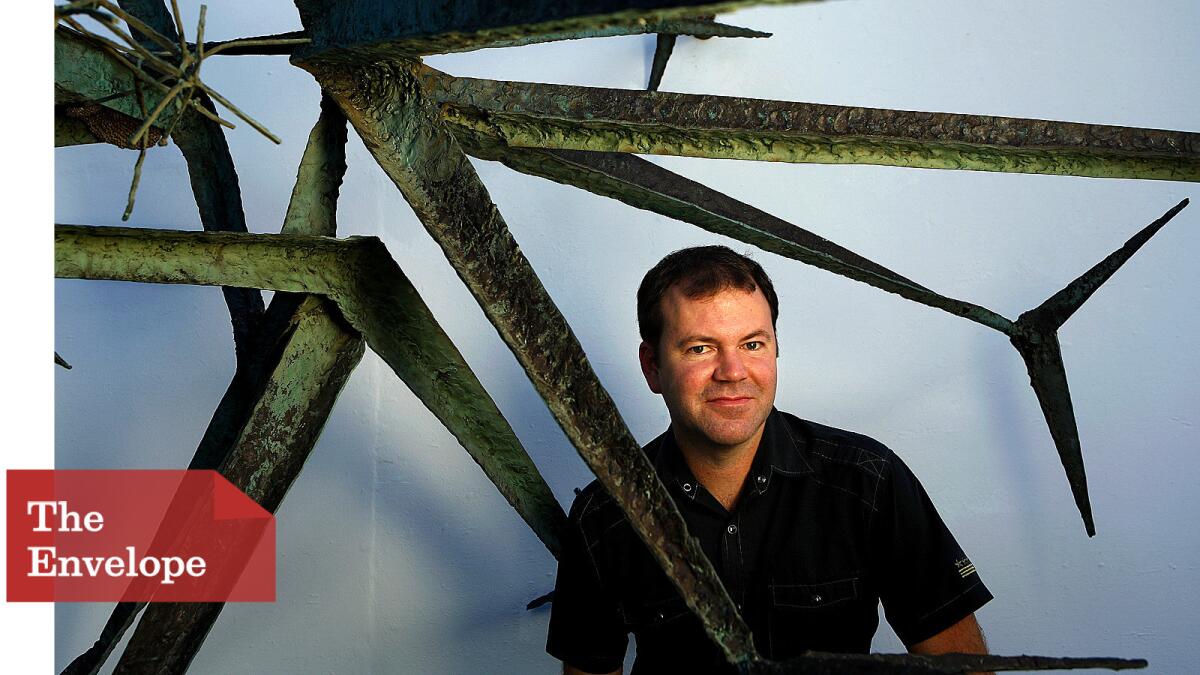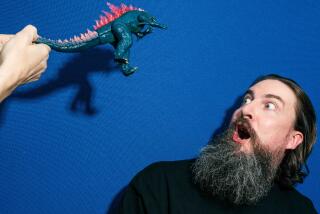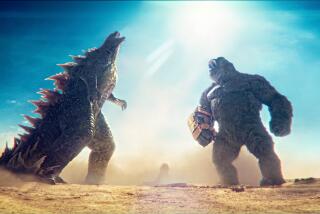To make new dinosaurs for ‘Jurassic World,’ the effects team looked back to the last ‘Jurassic’ period

Visual effects supervisor Tim Alexander doesn’t need DNA to make a dinosaur. For “Jurassic World,” he led a team at visual effects companies Industrial Light & Magic (ILM), Hybride and Image Engine in creating giant reptiles ranging from velociraptor to Indominus rex.
Alexander got his start as an electrical engineering student at Cornell University, when he attended a computer graphics lecture about “Terminator 2: Judgment Day.” Inspired, he landed an internship and then a job at Buena Vista Visual Effects before moving to ILM, where his second project was 1997’s “The Lost World: Jurassic Park.”
SIGN UP for the free Indie Focus movies newsletter >>
Eighteen years later, he’s returned to the franchise with “Jurassic World,” featuring the most “terrible lizard” the world has ever seen.
What inspired you?
We went back to a lot of the original designs that were done by [concept artist] Crash McCreery on the original film to base some of our dinosaurs on. Both in animation and in texturing, we also went and referenced real animals. Glen McIntosh is our animation supervisor and, to every animator that came on the show, he assigned a dinosaur and an animal. And they would look at that animal and translate that motion onto the dinosaur, so it was like a rhinoceros for a [stegosaurus]. So that gives the dinos a good natural feel.
Did you consider making colorful or feathered dinosaurs to reflect recent paleontological discoveries?
Yeah, so it was definitely a discussion early on. [Director Colin Trevorrow] didn’t feel like that’s really what people were expecting or wanting. Part of it, too, comes down to the production design and the look of the film: It’s very forest greens and taupes and park rangers. And if we then throw a bright pink raptor in there, it’s going to stick out and look a little weird.
How did you bring your designs to life?
We could have a performer doing the motion capture on stage, and we could see it on the monitor translated onto the raptor in real time. So we ended up casting four people at ILM as the raptors. We had a backpack with a tail rig on it. When a person’s doing it, they tend to do a lot of little tics and really quick movements. And that gave us a nice sense of realism and made them feel a little bit like birds — which, when we talked with [paleontologist] Jack Horner, he was saying they are actually bird-like.
How finished are these real-time raptors?
It’s about video game quality in terms of the texturing and the lighting. Once that’s done, that goes over into the regular computer graphics pipeline where we do everything. The animator then has to go in and do toenails, clicking, clacking, moving. They have to animate the fingers. They have to animate the jaw opening and closing. And then they also have to do the tail.
What was tricky about the Indominus rex?
We had these close-ups right on the mouth and on the head and on the foot. Oftentimes, we had to go in and update the texture and upgrade it and make it better, because it’s like taking a photo on your iPhone and trying to zoom in really close, and it starts getting all blurry and yucky. And that’s what happened quite a few times, particularly that shot when the Indominus first breaks out of its paddock and brings its head down, and Owen’s lying on the ground underneath the car. We actually blew that head up two-and-a-half times bigger than it was actually supposed to be in that shot, because Colin really wanted it to be imposing. And as we made it bigger and bigger and bigger, the texture started not holding up. So we had to go and repaint that whole side of the face with even higher detail than we initially had.
Was the marine reptile Mosasaurus challenging?
It was, and strangely so. In terms of its geometry or its shape, it’s a tube. So for us, getting it to look really cool and interesting was hard, because it’s just this smooth surface. And we ended up painting it three or four times over just to try and get the detailing right. We ended up with a lot of whale reference — their fins, and the way that they get scratched and cut, and the way that they age.
What do you hope you achieved?
I feel like we were trying to really pay homage to our past. You know, ILM did the original “Jurassic Park.” We got together with all these people — Dennis Muren, Phil Tippett, a lot of guys who were on the original movie — and we talked about how this movie could be different, and what they had learned on the original movie. And it really gave us a good foundation and steppingstone to get into making this something new and its own entity.
More to Read
From the Oscars to the Emmys.
Get the Envelope newsletter for exclusive awards season coverage, behind-the-scenes stories from the Envelope podcast and columnist Glenn Whipp’s must-read analysis.
You may occasionally receive promotional content from the Los Angeles Times.






